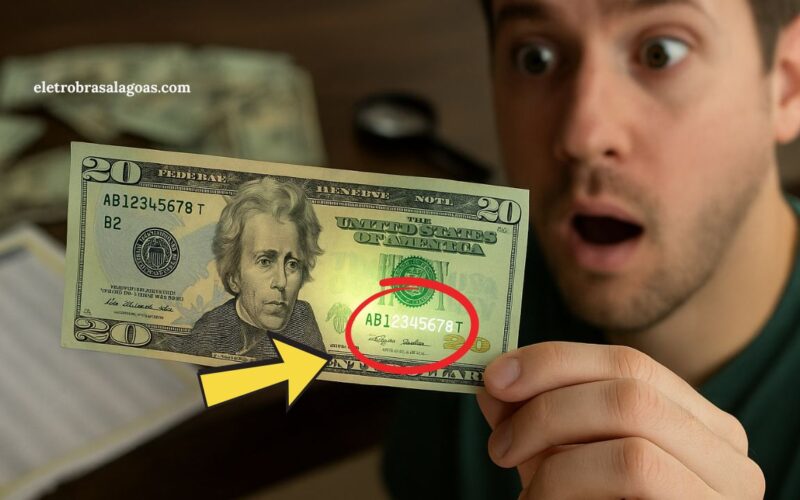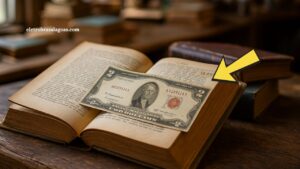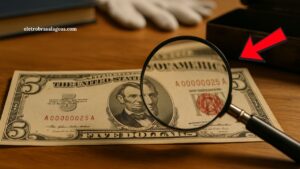Imagine that a simple glance at your wallet reveals a hidden treasure—a 2003 series $20 bill whose serial number reads like a perfect staircase. These rare ladder serials—such as 12345678 or 87654321—are fetching thousands of dollars in today’s collectors’ market.
If you own a $20 printed in 2003, it might be worth much more than its face value. Here’s why that particular bill is creating waves among collectors—and how to know if you’ve hit the jackpot.
What Exactly Is a Ladder Serial Number?
A ladder serial number is a sequence of digits in perfect ascending or descending numerical order. Examples include:
- Ascending: 12345678
- Descending: 87654321
These sequences are extremely hard to come by in circulation because the odds of printing exactly that sequence are astronomically low. That’s what makes them so valuable to collectors.
Why the 2003 $20 Bill Is a Collector Favorite
The 2003 series introduced updated security features, including color-shifting ink, a watermark portrait of Andrew Jackson, and a subtle security thread. Coupled with a rare ladder serial, these features make a 2003 $20 bill doubly desirable:
- Modern design and anti-counterfeiting features
- Rare serial number
- High collectibility due to age and condition
Value Comparison: Ladder vs Standard $20
| Bill Type | Typical Value |
|---|---|
| Normal, circulated 2003 $20 | $20–$22 |
| Crisp, uncirculated 2003 $20 without special serial | $50–$100 |
| Ladder serial (e.g. 12345678) | $5,000+ |
| Near-ladder (e.g. 23456789) | $1,000–$3,000 |
| Mid-rarity variants (e.g. early digits, partial ladders) | $200–$800 |
Bill condition plays a significant role—crisp, uncirculated examples demand much higher prices.
How to Spot a Ladder Serial in Your Change
- Examine the serial number, which appears twice on the front of the bill.
- Make sure it’s an 8-digit sequence.
- Scan for ladder patterns, such as 12345678, 23456789, or 87654321.
- Take note if it begins with a 0, like 01234567—also rare, though slightly less valuable.
- Compare the appearance to a collector’s guide or numismatic database.
Finding such a bill is rare—but keeping an eye out at checkout could prove rewarding.
What to Do If You Discover a Ladder Serial
- Don’t spend it—hold onto the bill.
- Assess its condition: crisp, flat, no folds is ideal.
- Get it professionally graded, using recognized services—for example, PCGS Currency or PMG—for authentication and increased value.
- Sell wisely, through reputable auction houses or collector networks, not just ordinary marketplaces.
Provenance and condition matter—well-documented bills often fetch more.
Why Collectors Love Ladder Serials
- Mathematical appeal: perfect numerical run is rare.
- Visual symmetry: they stand out, look neat, and feel puzzle-like.
- Provenance adds value: a story behind the bill increases desirability.
- Rarity meets modern design: newer bills with these serials are a fresh find.
Are Ladder Serial Numbers the Only Valuable Type?
No—but they’re among the most prized. Other valuable serial patterns include:
- Radars/Palindromes: e.g., 12344321
- Repeaters: e.g., 12121212
- Solid digits: e.g., 77777777
- Binary patterns: e.g., 01010101
Still, the ladder bill stands out for its visual simplicity and sequential elegance.
A 2003 $20 bill beautified with a ladder serial could be worth five figures, more than the monthly grocery bill it might have bought.
This chance discovery reflects the fascinating intersection of design, numerical rarity, and condition, lifting paper money from mere currency to valuable collectible. Look closely at your daily change—it might just hold a hidden treasure.
FAQs
How can I verify if my $20 bill is a ladder serial?
Check the serial number—if it reads in perfect ascending (12345678) or descending (87654321) order, it’s a ladder serial. Confirm that it’s from 2003, which adds to its value.
Where can I get a ladder serial graded or sold?
Contact professional currency graders like PMG or PCGS Currency. Sell through numismatic forums, rare-currency auctions, or reputable dealers to ensure authenticity and fair pricing.
What kind of prices are realistic?
Perfect ladder serials on 2003 $20 bills in top condition have recently sold for $5,000 or more. Lesser variants may still bring in $1,000–$3,000, depending on rarity and condition.




